How to type special keyboard symbols on Mac
Whether you’re new to Mac or have been using it for years, highly specialized things like shortcuts, special Mac symbols, and accented characters might result in a web investigation spiralling out of control.
If you’ve just recently switched from Windows, you should know that Macs don’t really use alt codes to type special symbols. Instead, all of the most popular Unicode characters can be typed in right from the keyboard. Unfortunately, Apple could do a much better job of shining light at this functionality.
For example, if you want to get a copyright symbol on Windows (©), you need to type in Alt 0169 — whereas, a copyright symbol on Mac is just Option + G. Similarly, a degree symbol on Mac (º) is Option + Zero and a registered trademark symbol on Mac (™) is Option + 2.
Truth is there are many more like this and below we’ll explore different ways of how to type copyright symbol on Mac or any special characters Macs allow, where to find Apple keyboard symbols, and whether there’s an emoji keyboard on Mac.
What Are All The Mac Keyboard Symbols?
While a standard computer keyboard contains around 80 keys, you’re able — in one way or another — use it to input all of the Unicode characters, of which there are about 130,000.
To start, simply explore how all the face-value characters change when you combine them with modifier keys — Control, Option, and Command. You can even combine multiple modifiers together as well. To see all Mac keyboard shortcuts symbols clearly, however, you need to turn on the full keyboard layout.
Display all Mac keyboard symbols
Even if you’ve been using your Mac for a while, it’s useful to look at all the possible keyboard combinations from time to time to refresh your memory and discover new ways of quickly inputting information.
Luckily, it’s easy to show all Mac key symbols at once:
- Go to System Preferences ➙ Keyboard
- Check the box next to “Show keyboard and emoji viewers in menu bar”
Now you can click on the language flag in your menu bar and choose Show Keyboard Viewer. The interactive display will appear, showing all the keyboard symbols and altering the view in real time when you use modifier keys.
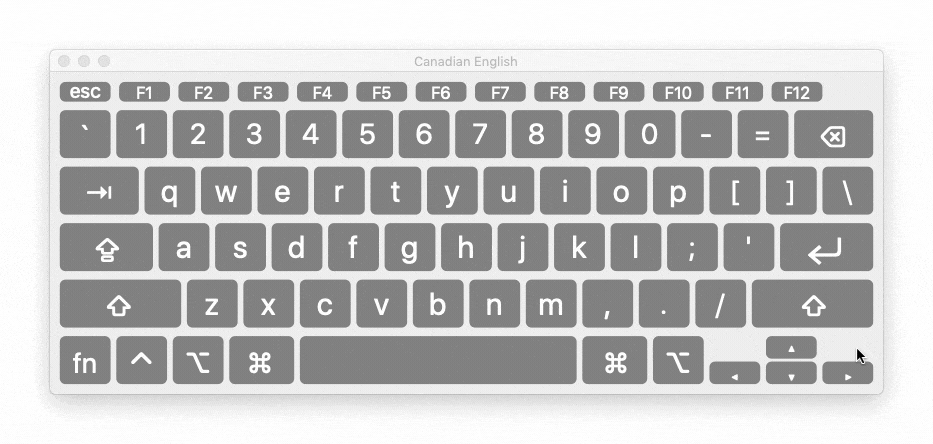
Of course, even using all the modifier keys and combinations available, it’s impossible to fit all the characters in such constrained amount of space. To see all Mac key symbols, you need to select Show Emoji & Symbols option from the same language flag menu, or use a shortcut Control + Cmd + Space.
Here, you’ll see all kinds of categories on the left: Emoji, Arrows, Currency Symbols, etc. In the center are all the characters within a given category. And on the right you can pick a font variation of the same symbol.
To type in a TM symbol Macs use, for example:
- Open your word processor of choice
- Call the Mac symbols menu
- Navigate to Letterlike Symbols on the sidebar
- Double-click on ™ to paste it into your editor
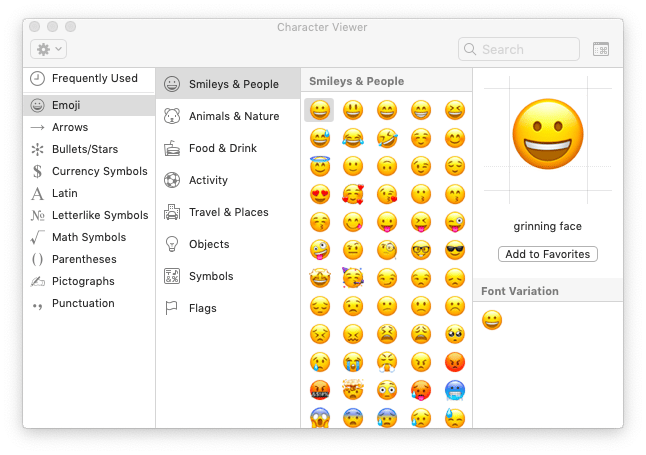
How to create custom Mac keyboard shortcuts symbols
With the Show Emoji & Symbols window, you have access to nearly all Unicode characters you’ll ever need. However, if you need to use some special characters — such as a copyright symbol on Mac — rather frequently, it would be quite inconvenient to call up a menu and search for what you need every time. Of course, you can add the copyright symbol to your favorite characters, which will save you some time, but there’s a much better way.
Macs allow you to create shortcuts for all keyboard symbols to be able to easily type them in whenever you need. For example, to create a shortcut for the copyright symbol on Mac:
- Type in the © character into your editor as described above and copy it with Command + C
- Open System Preferences ➙ Keyboard
- Navigate to the Text tab
- Click the plus sign
- Paste your © symbol in the With column on the right
- Type in a desired key combination to trigger the copyright symbol on Mac in the Replace column on the left
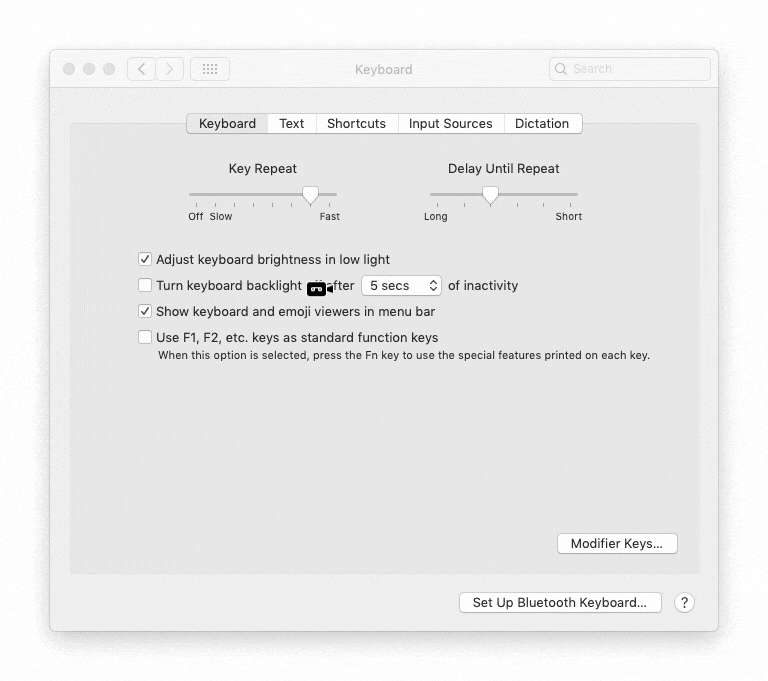
Although this default shortcuts method works well for characters or emoji, it doesn’t effectively translate into longer strings of text or paragraphs. If you want to, for instance, create a shortcut that outputs a sales email template, you’d need to use a little nifty tool called Rocket Typist.
Rocket Typist is a full-featured text expansion app created to minimize repetition in composing any form of text-based communication. It’s essentially a small database of text snippets you’ll use over and over again.
Starting with Rocket Typist is easy: use File ➙ New to create a new snippet, specify the abbreviation, fill out as much text (sentences or even paragraphs) as you need, and then use the abbreviation to expand text in any application.
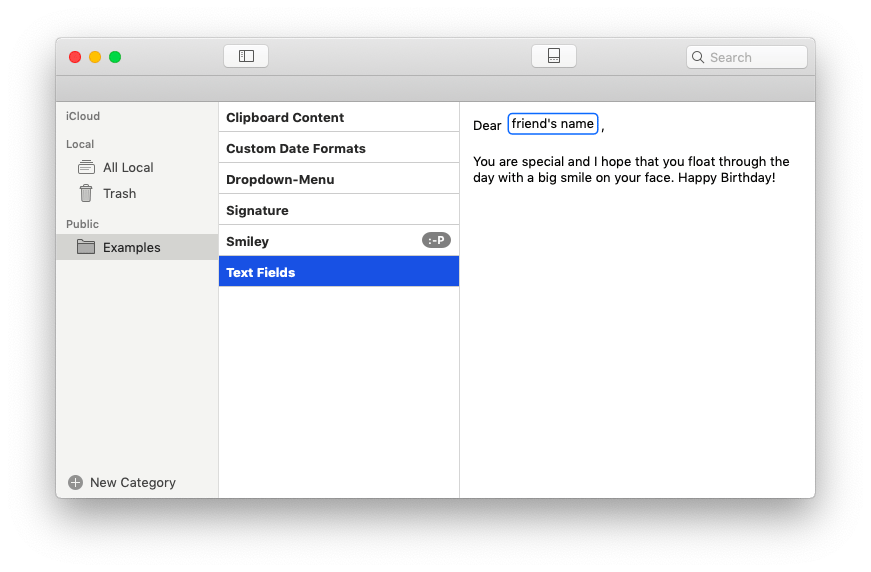
How to switch between keyboard languages quickly
Sometimes, the Mac keyboard symbols you need are only available in another language — say, they could be Cyrillic-based. To access them, you’d need to enable another keyboard layout on your Mac.
Luckily, it’s easy to do:
- Go to System Preferences ➙ Keyboard
- Navigate to Input Sources
- Click the plus sign
- Choose the language you need and press Add
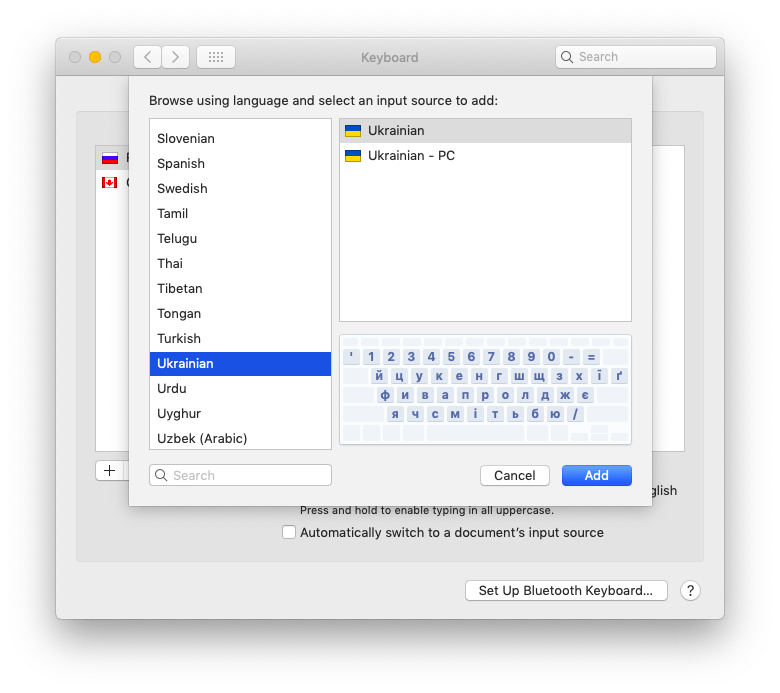
Now, the second keyboard layout will be activated. Don’t forget to check the box next to “Show Input menu in menu bar” to see which layout is currently active. The standard shortcut to switch between layouts is Cmd + Space, but you can also change it to Caps Lock key in the Input Sources options.
Extra tip: typing emoji on iPhone is much easier if you add an emoji keyboard layout to your languages.
Special Characters: Type in various symbol variations
In some cases, you might just want to access a variation of the symbol that’s already on your keyboard, such as an accented letter.
One way to do this is to find the character of your choice in the Keyboard Viewer, as described above. Another way is to use a keyboard shortcut. You can get an acute accent by typing Option + E and then the letter. Similarly, circumflex is Option + I, grave accent is Option + backquote, tilde is Option + N, and umlaut is Option + U.
A quicker option though is to simply press the key of the letter you want to modify and hold it for a second until a small menu appears. Then just choose a number that corresponds to the modification you seek.

Search for anything instantly
It’s likely that you won’t retain all the information provided here. But don’t worry, the only thing you need to keep is a supercharged search that can take you right back to the answer you’re looking for.
Lacona is an intelligent search for your Mac that contextually analyzes the query and outputs a range of possible solutions, whether it’s launching a certain app, looking it up online, or performing a pre-defined action.
Any question about Mac keyboard shortcuts symbols — such as “how to type copyright symbol on Mac?” — would be met with a guiding response. And all you have to do to start Lacona is press Option + Space.
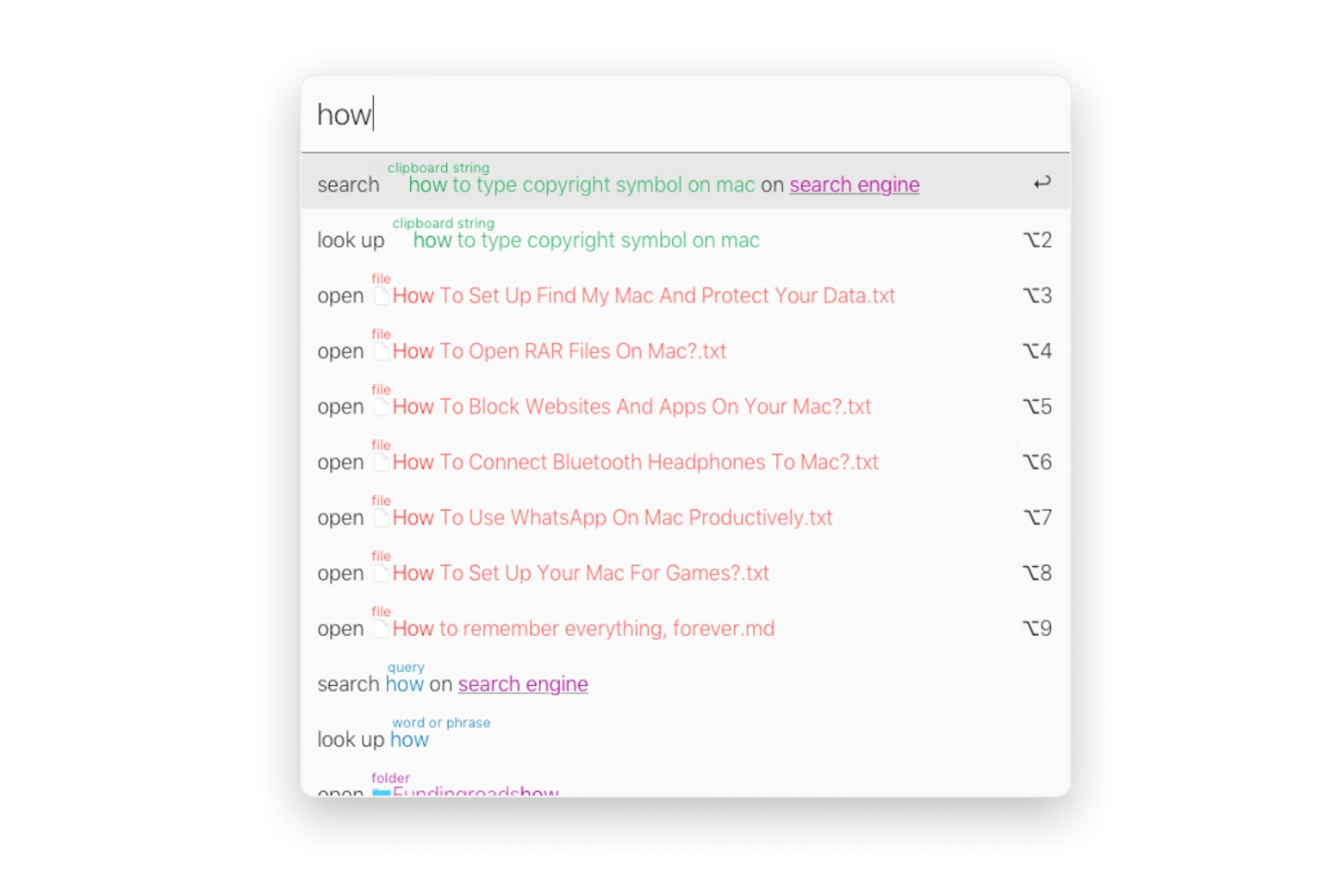
So there are a lot of things your Mac is capable of that you might have not even considered before. With regards to symbols and characters, what you see on the keyboard is just a tiny slice compared to the total amount available. Using Mac symbols properly will enrich your communication, making it clear and efficient, especially if you get used to creating snippets with Rocket Typist and keeping everything at the tips of your fingers with Lacona.
Best of all, both apps are available to you on a free trial through Setapp, a platform of more than 240 specific Mac apps that are designed to make your days more productive and fun. Give it a try and see how you can make things faster and smarter!





